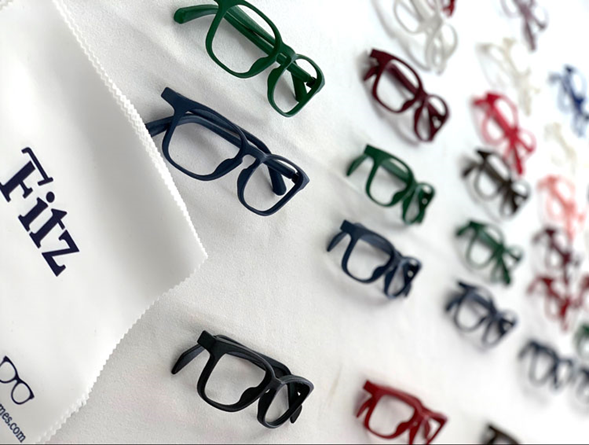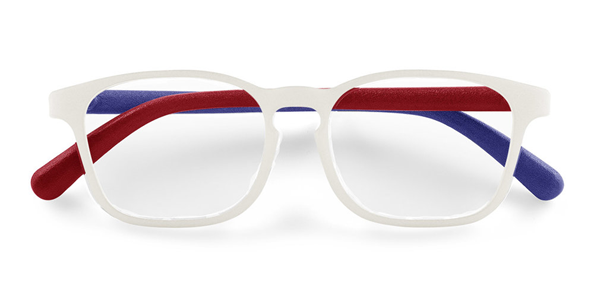
Charles R. Goulding and Preeti Sulibhavi eye the 3D printing that brings Fitz Frames to fruition.
Smaller companies in a myriad of industries are bringing manufacturing home to the U.S. by integrating 3D printers in their production processes. Fitz Frames, a customizable, online retailer of eyeglasses, produces its customized eyeglasses in Youngstown, Ohio, as opposed to taking their online orders and having their frames produced offshore. This way their customers receive lightweight, durable, customized frames in less time and at lower cost, largely due to the use of 3D printers.
Youngstown, Ohio
Youngstown has grown from being an old “steel town” (for traditional manufacturing) to now being a 3D printing hub. The America Makes initiative helped make Youngstown the leading additive manufacturing hub in the nation. Youngstown is the center of a 3D printing ecosystem that is growing with satellite centers being added in recent years. Youngstown has become a major U.S. center for 3D printing, which gives Fitz Frames a strong resource base to benefit from.
In addition to America Makes, the Air Force Research Laboratory (AFRL), Materials and Manufacturing Directorate, Manufacturing and Industrial Base Technology Division has decided to award the National Center for Defense Manufacturing and Machining (NCDMM) and Center Street Technologies (CST), in Youngstown, a grant for over $9.4 million to combine efforts in a two-year effort to support the Massive Area Additive Manufacturing Program (MAAM).

The Research & Development Tax Credit
The now permanent Research and Development (R&D) Tax Credit is available for companies developing new or improved products, processes and/or software. As of 2016, eligible startup businesses can use the R&D Tax Credit against $250,000 per year in payroll taxes.
3D printing can help boost a company’s R&D Tax Credits. Wages for technical employees creating, testing and revising 3D printed prototypes can be included as a percentage of eligible time spent for the R&D Tax Credit. Similarly, when used as a method of improving a process, time spent integrating 3D printing hardware and software counts as an eligible activity. Lastly, when used for modeling and preproduction, the costs of filaments consumed during the development process may also be recovered.
Whether it is used for creating and testing prototypes or for final production, 3D printing is a great indicator that R&D Credit eligible activities are taking place. Companies implementing this technology at any point should consider taking advantage of R&D Tax Credits.
Conclusion
There are many benefits to bringing 3D printers into the eyewear industry. They range from creating customizable eyewear to creating jobs at home. Whatever your reason we believe you will find using 3D printing technology to create your next pair of custom eyeglasses a rewarding experience.
